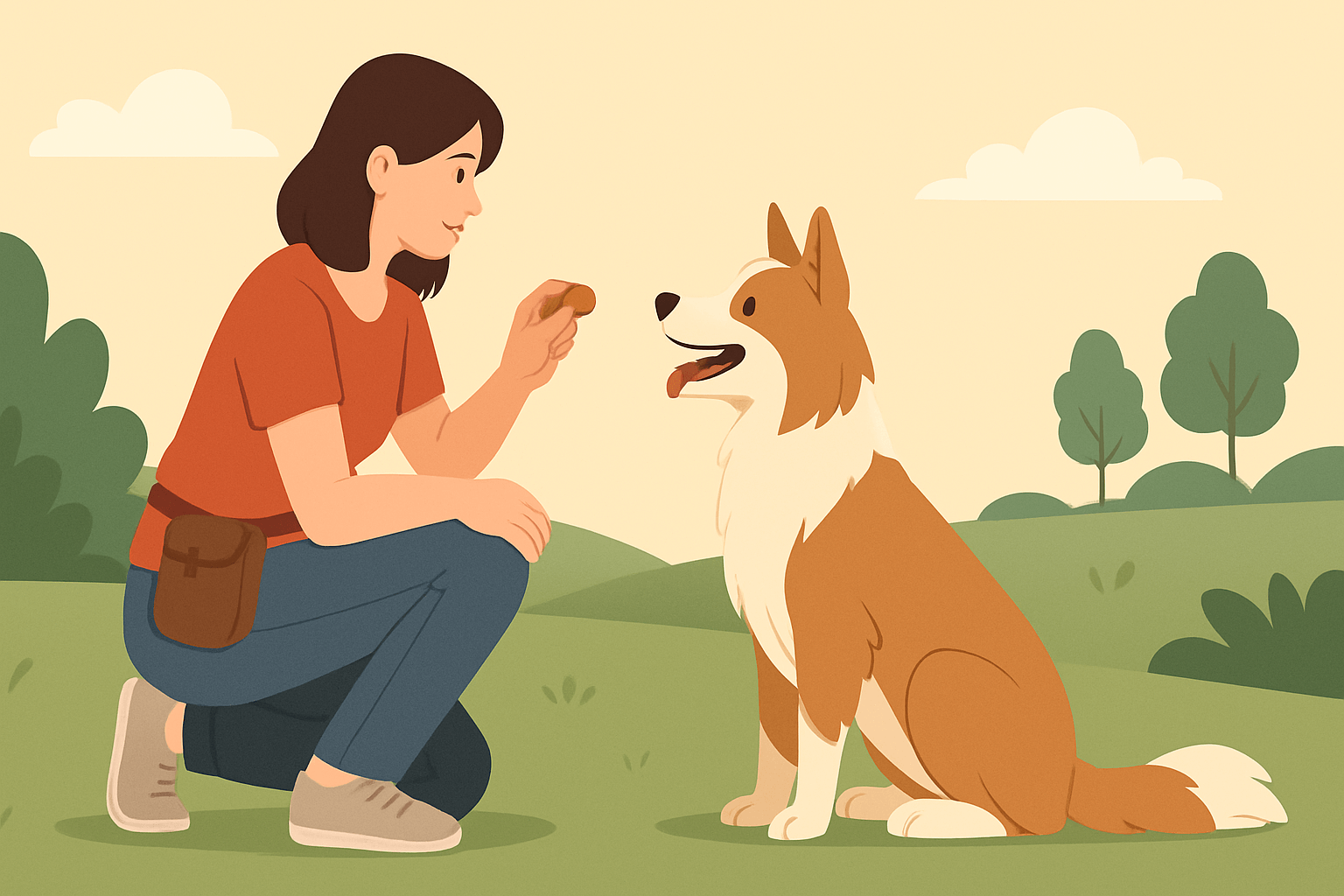Teaching your dog basic commands is more than just a fun trick—it's the foundation of a safe, respectful, and joyful relationship. Whether you're raising a bouncy new puppy or helping an older rescue adjust, dog training commands are essential for communication and trust. Let's walk through the core commands to teach your dog, when to start, and how to make learning feel like play.
Why Dog Commands Matter
Imagine being able to call your dog away from danger or have them calmly sit before crossing the street. These aren't just nice-to-haves—they're potentially life-saving. Basic dog commands also reduce stress, prevent problem behaviors, and help your pup feel more secure in their environment.
7 Essential Dog Training Commands
- 1. Sit – The foundation of obedience. Great for calming your dog and asking for attention.
- 2. Stay – Builds impulse control. Start small (3–5 seconds) and increase as your dog succeeds.
- 3. Come – A critical recall command that could save your dog’s life one day.
- 4. Down – Encourages relaxation and helps with overexcited behavior.
- 5. Leave it – Keeps your dog safe from dangerous items or temptations.
- 6. Heel – Teaches your dog to walk politely without pulling on the leash.
- 7. No – A universal “stop what you’re doing” cue. Use gently and consistently.
Teaching a Puppy Obedience: Start Early, Stay Consistent
Got a puppy? You’re in the golden window for learning. Basic puppy commands like “sit,” “come,” and “stay” can be taught as early as 8 weeks old. Keep sessions short (5–10 minutes), use high-value treats, and celebrate every win like it’s a jackpot.
My Experience with Rescue Dogs and Training Wins
When I adopted Luna, a shy Border Collie mix, she didn’t even know her name. We started with “sit” and “come,” using boiled chicken as a reward. Within a week, she’d mastered four dog training commands—and our bond had deepened immensely. Every dog learns at their own pace, and patience pays off.
Tips for Success
- Be consistent: Use the same word and tone for each command.
- Keep it positive: Use rewards, not punishment. Praise works wonders!
- Practice daily: Even 5 minutes a day adds up.
- Minimize distractions: Start in quiet spaces before moving outdoors.
Helpful Tools & Treats
- Check out more healthy treats for dogs that make training extra motivating.
- Try a clicker for timing your rewards perfectly.
- A treat pouch and long lead leash make outdoor sessions easier.
Summary: Build Trust Through Training
Dog commands aren't just about control—they're about connection. From “sit” to “heel,” each cue you teach builds understanding and mutual respect. Whether you're teaching a curious puppy or an adult dog, approach training with patience, consistency, and lots of love. You’ve got this!
Frequently Asked Questions (FAQs)
1. What are the first dog commands to teach?
2. How long does it take to teach a dog commands?
3. Can older dogs learn new commands?
4. What’s the best reward for training a puppy?
5. Should I use hand signals with verbal commands?
6. How often should I train my dog?

About SniffnTail
SniffnTail is your go-to destination for everything pets. From helpful advice, tips, and insights to thoughtfully selected products and resources, we’re here to support pet owners at every stage of their journey. Whether you're caring for a playful pup, a wise old cat, or anything in between, SniffnTail offers tools and knowledge to make pet parenting easier and more joyful.
Related Articles
 Training & Behavior • 7 min read
Training & Behavior • 7 min readBorder Collie Separation Anxiety: The Working Dog's Dilemma
Learn how to manage separation anxiety in Border Collies, a high-energy breed prone to job-oriented anxiety when left idle. Discover expert tips on mental stimulation, daily routines, and effective bonding.
 Training & Behavior • 7 minutes
Training & Behavior • 7 minutesBest Leash Training Techniques for Stubborn Dogs
Struggling with a pup who pulls or refuses to walk? Discover expert-approved, heart-led leash training tips for difficult dogs—perfect for pet parents looking to make walks enjoyable again.
 Training & Behavior • 7 min read
Training & Behavior • 7 min readGerman Shepherd Protective Instinct vs. Anxiety Disorders: How to Tell the Difference
Learn how to distinguish normal guarding from anxiety-driven aggression in German Shepherds. Understand behaviors, triggers, and practical solutions from a certified pet expert.

